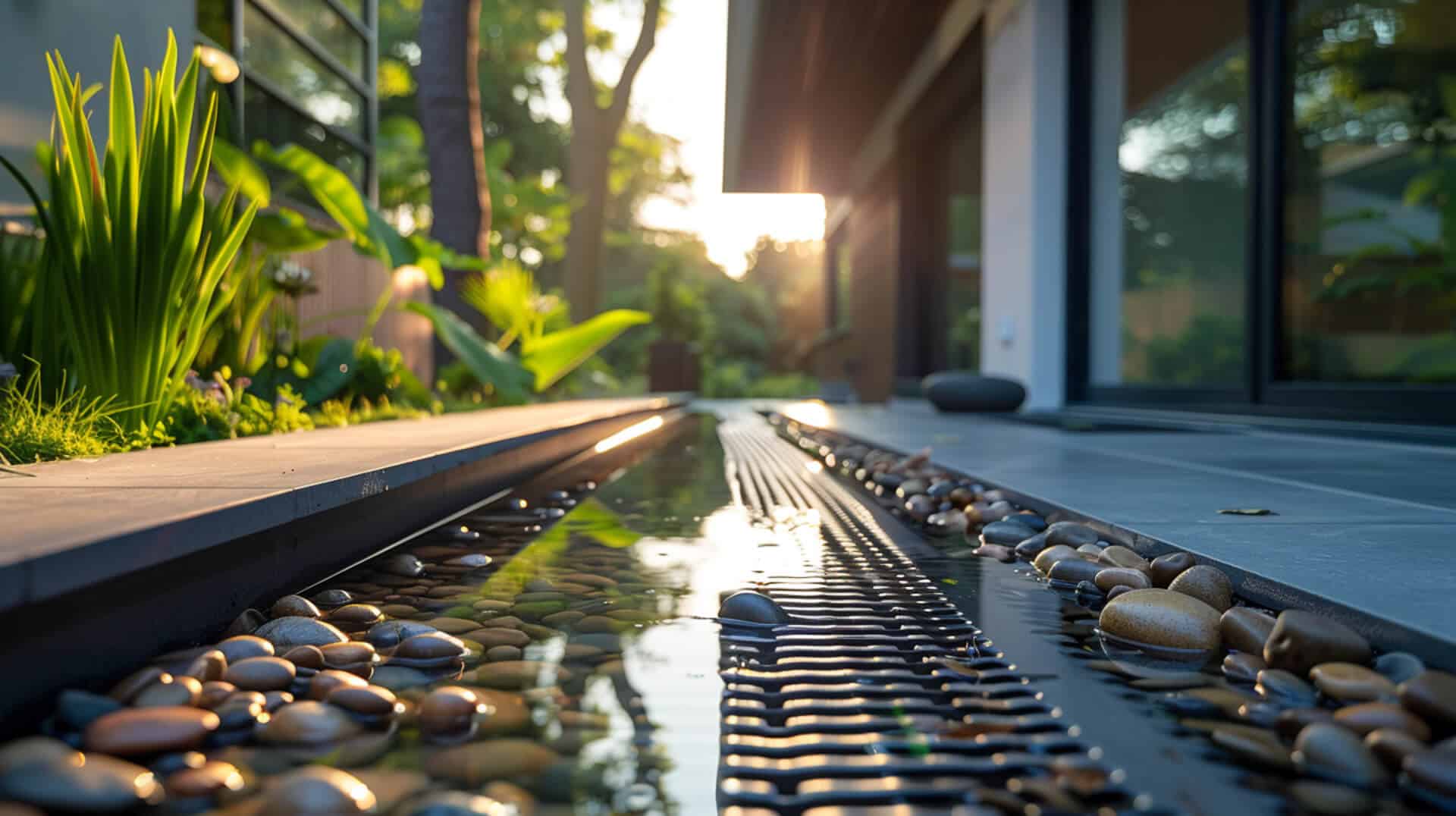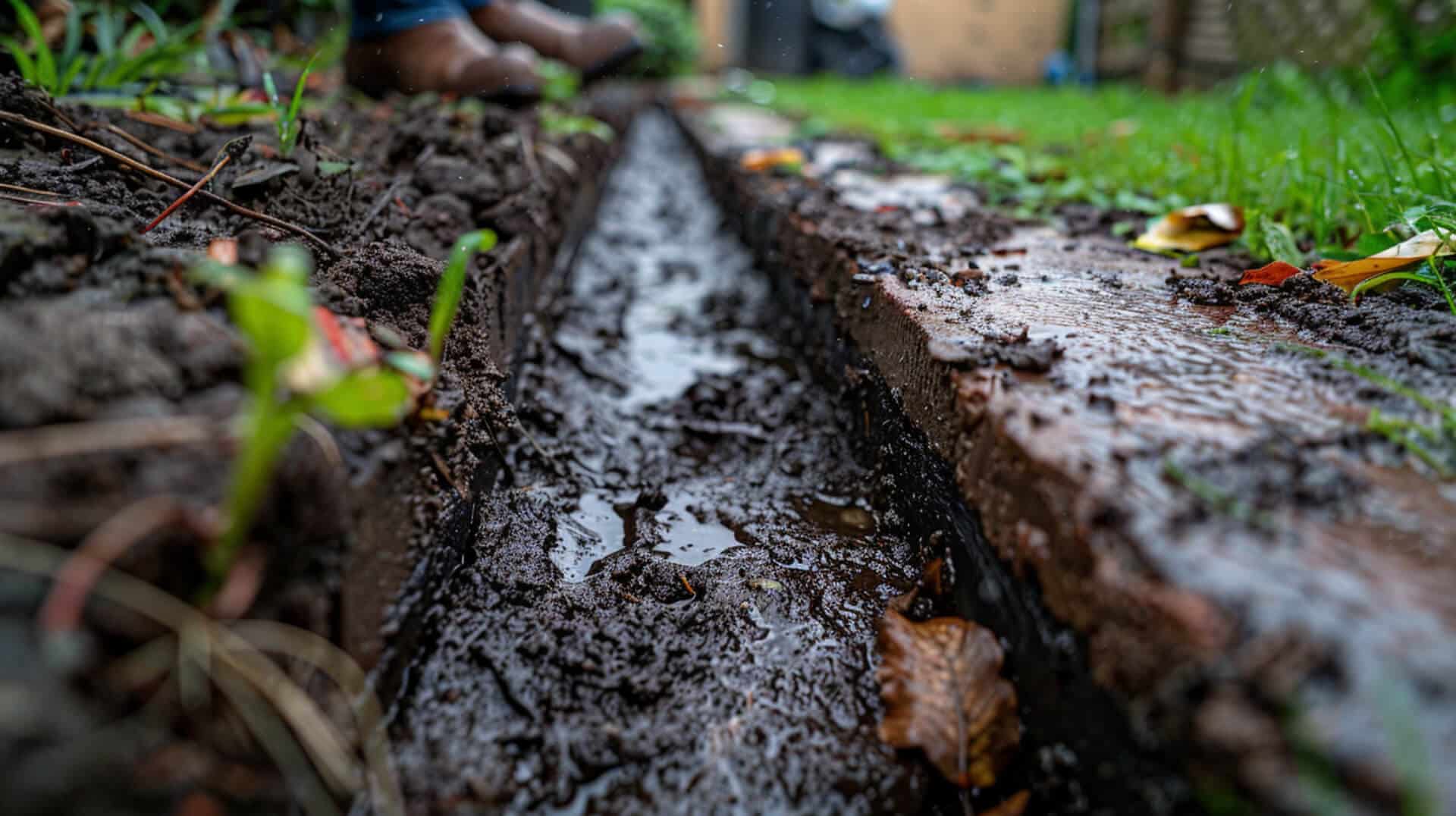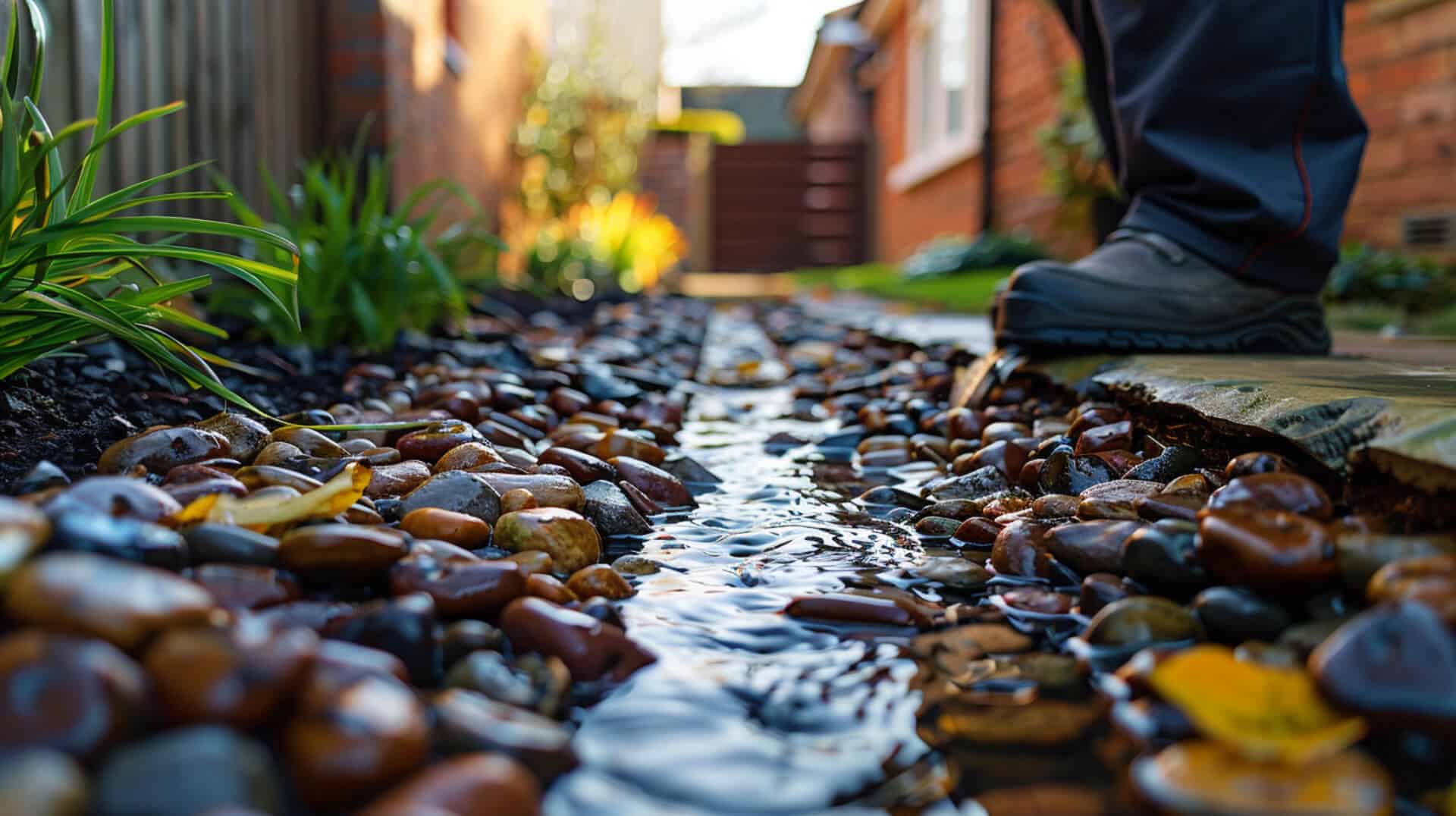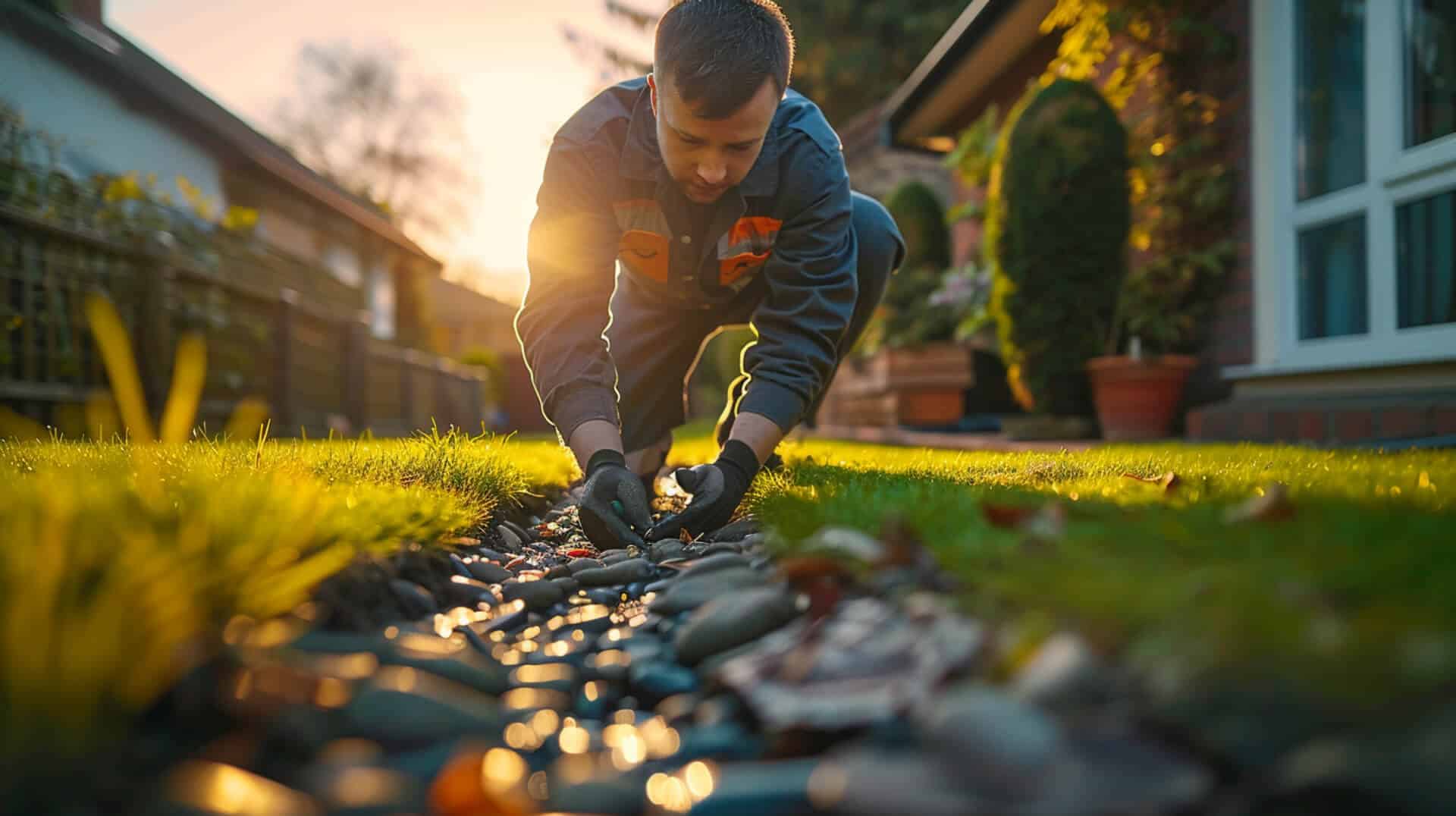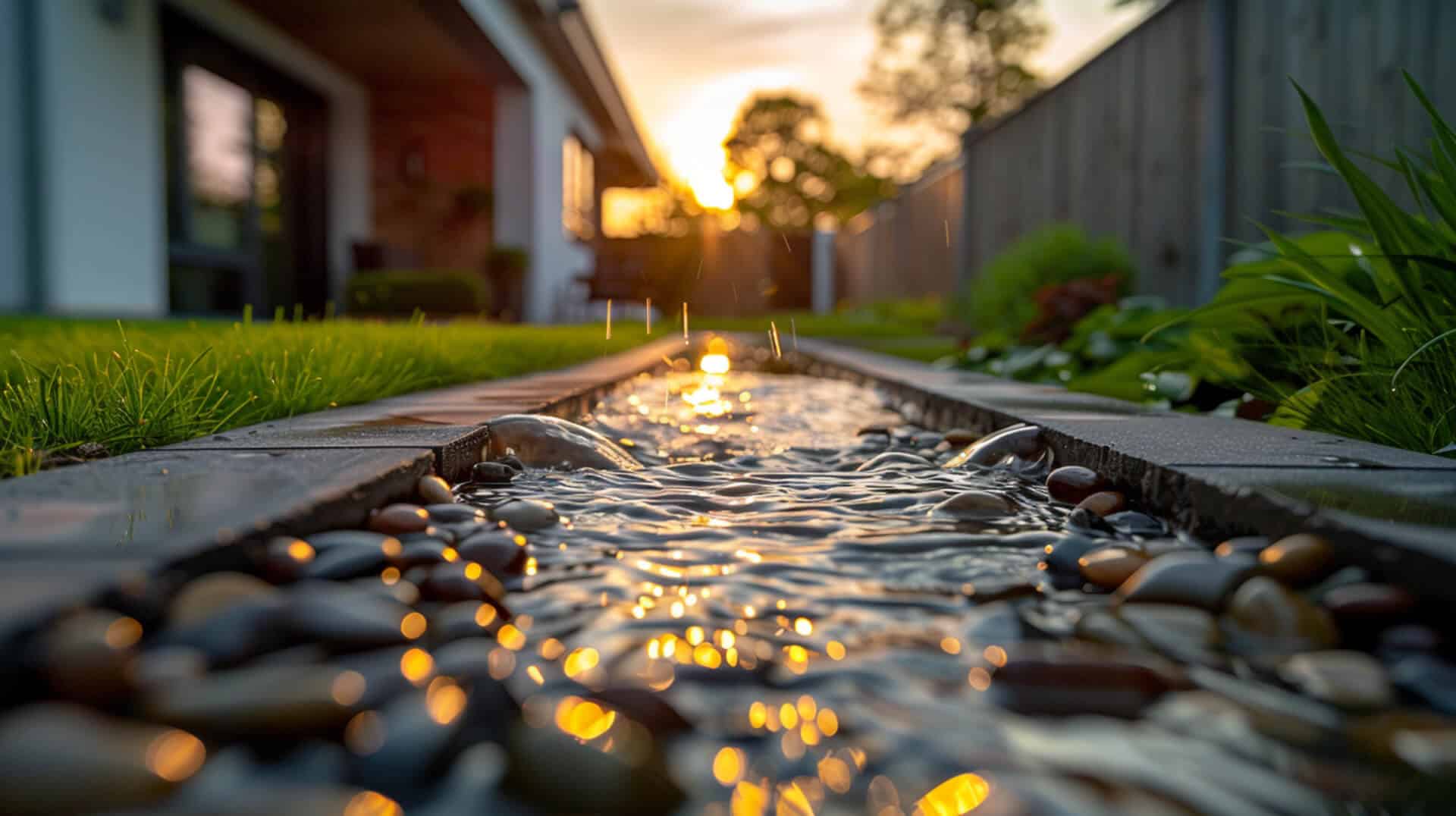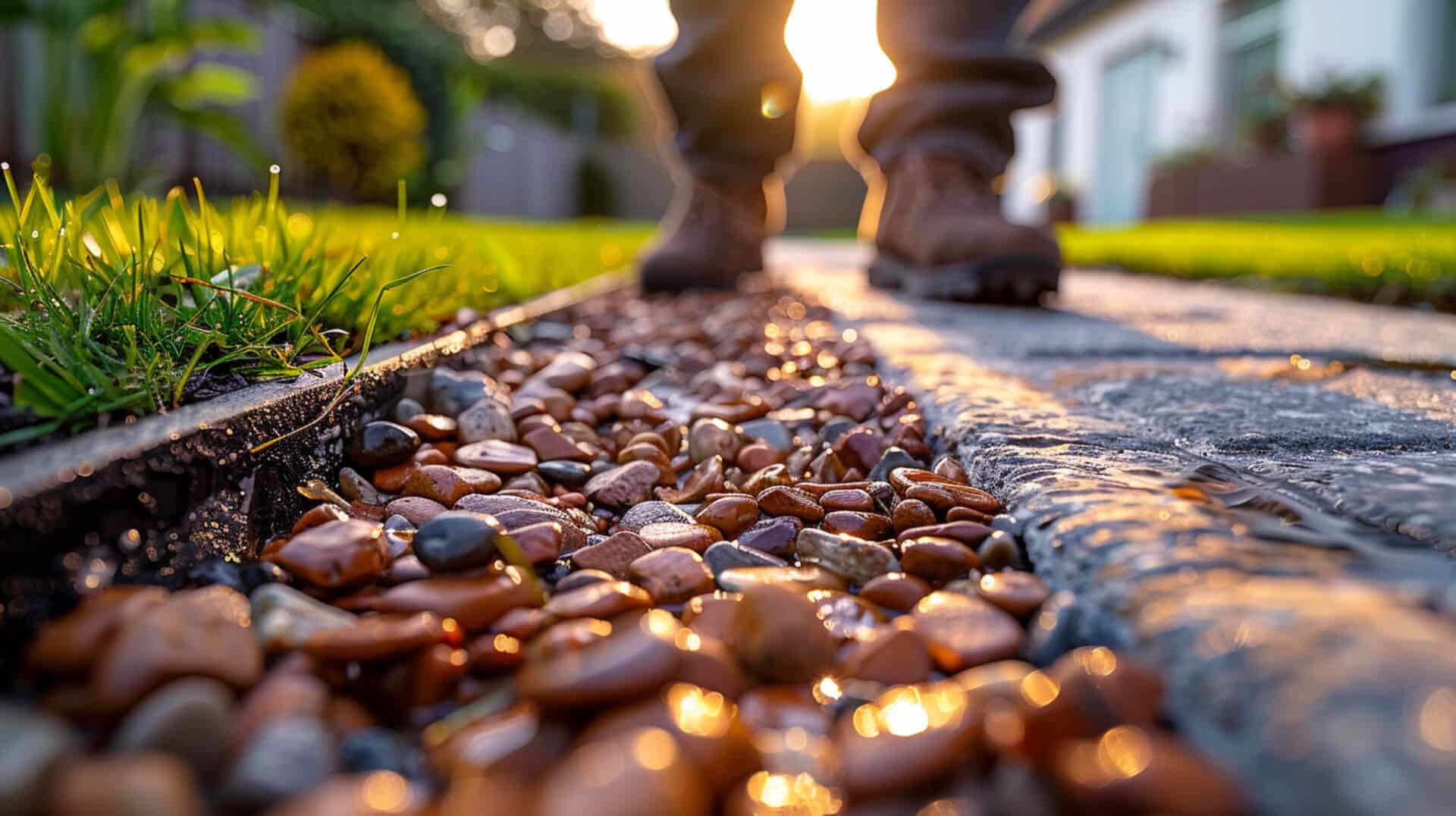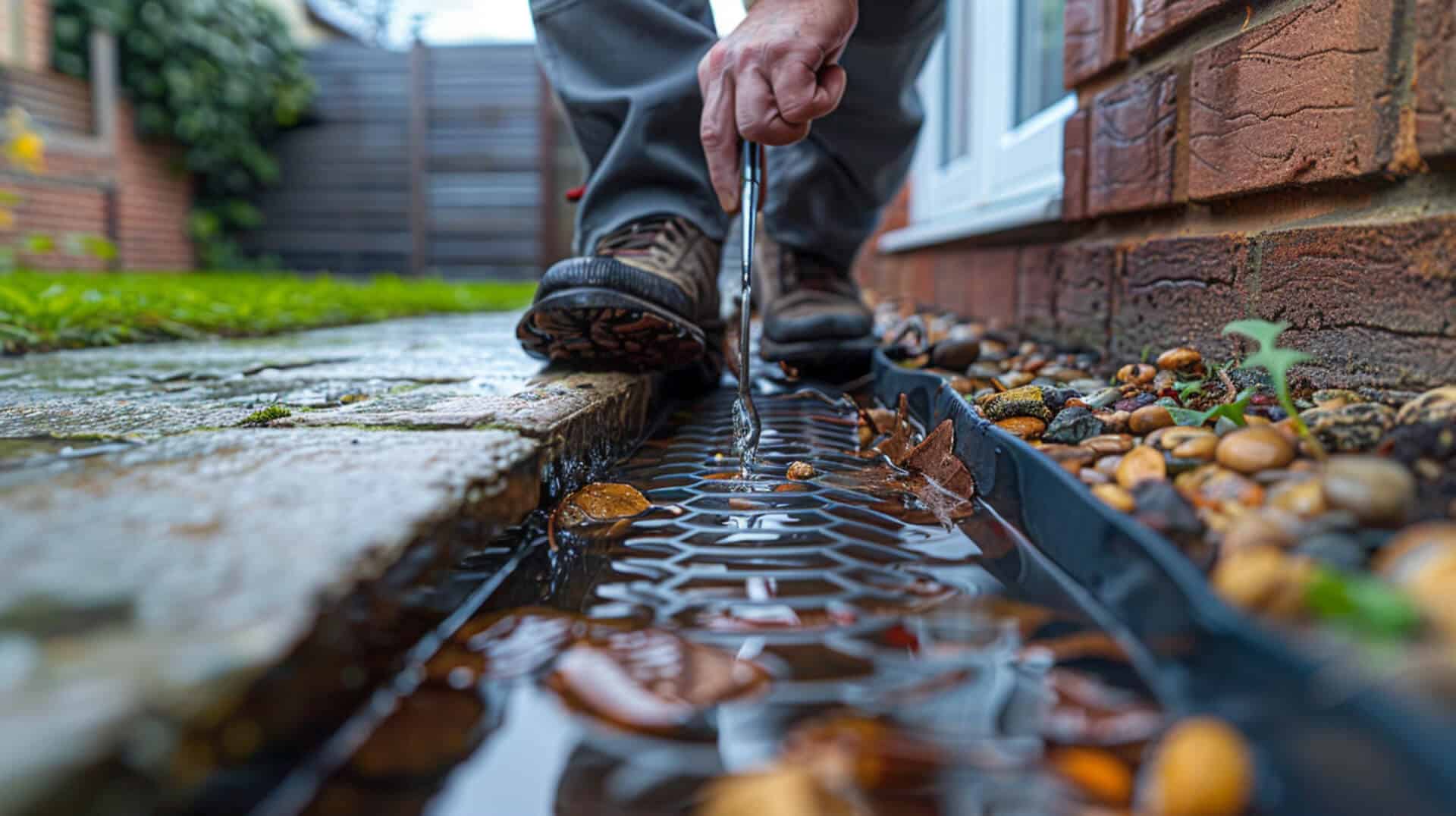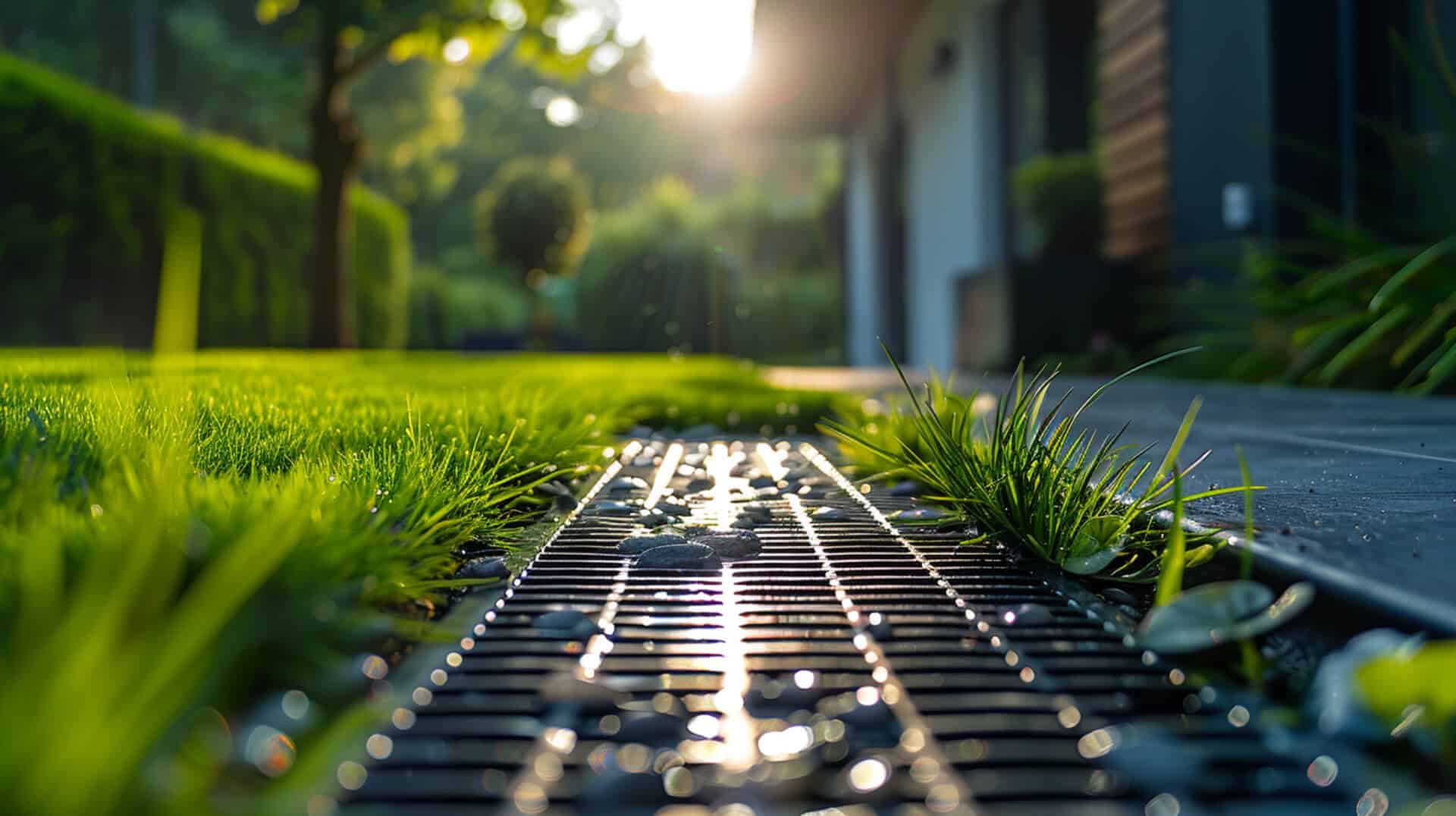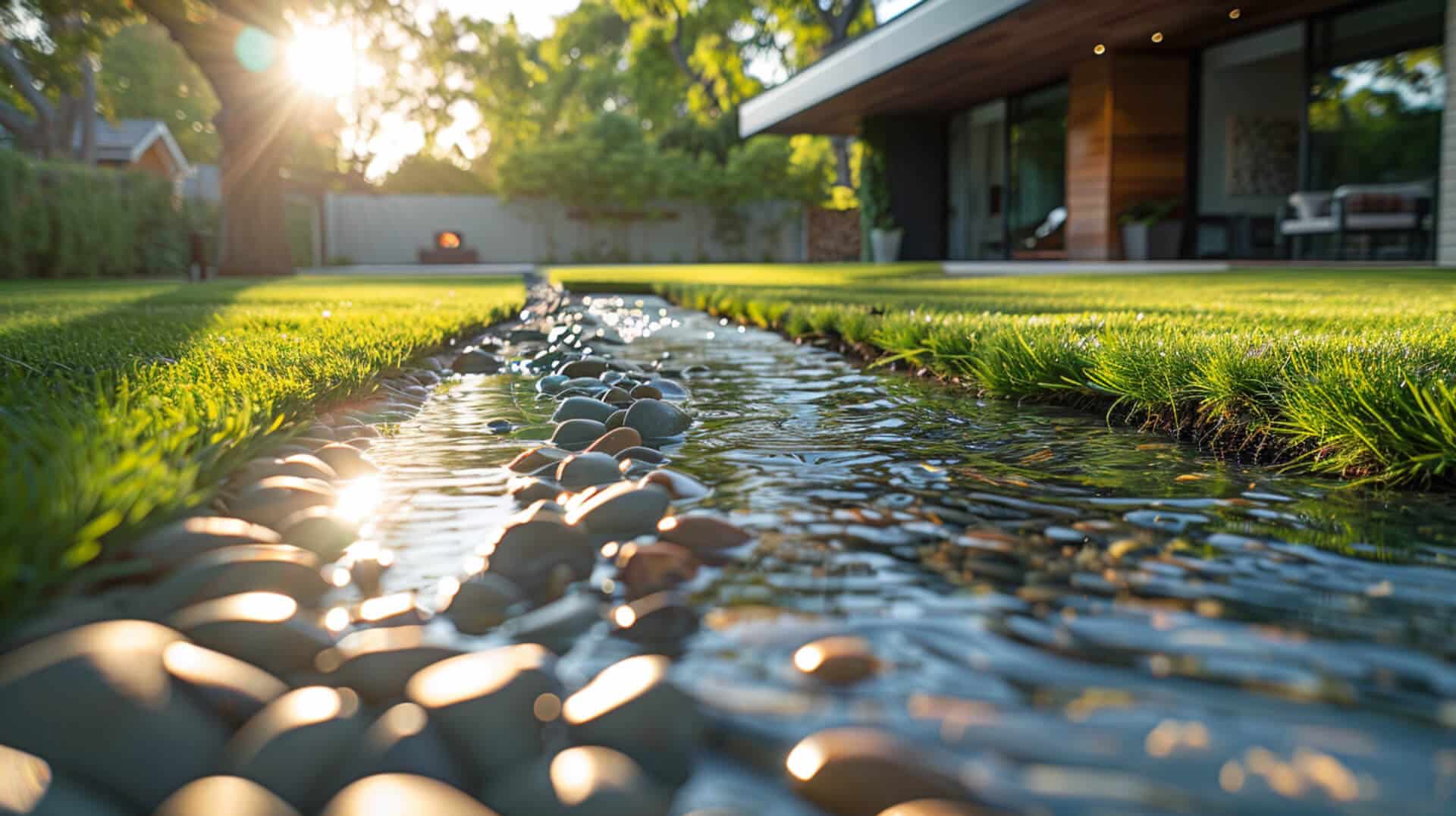 How To Maintain A French Drain After Installation
How To Maintain A French Drain After Installation
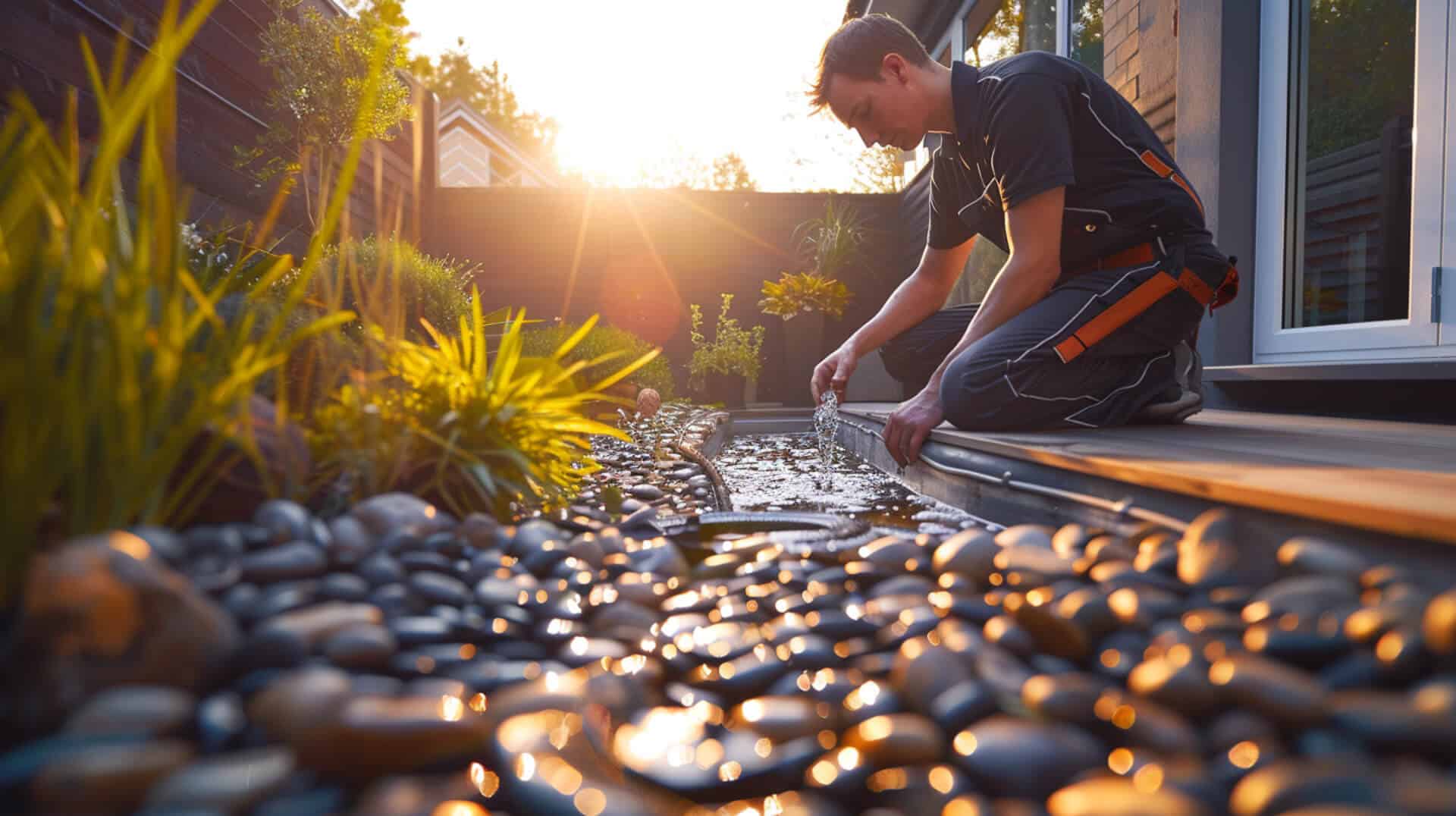
A French drain is an underground system designed to redirect water away from your property’s foundation, preventing water accumulation and potential damage. It typically consists of a trench filled with gravel or rock containing a perforated pipe that channels water from your property. This simple yet effective mechanism is crucial for maintaining the structural integrity of buildings and enhancing landscape drainage.
Understanding the Importance of French Drains
French drains serve a foundational role in water management, safeguarding basements from moisture intrusion and mitigating the risk of water damage. By managing surface runoff and groundwater, these systems are instrumental in preserving your property’s condition and value.
Key Components of a French Drain System
The primary elements of a French drain include gravel or rock and a perforated pipe. These materials work in concert to facilitate the smooth flow of water, directing it away from areas where it could cause harm.
The Necessity of Regular Maintenance
To ensure the longevity and effectiveness of your French drain, regular maintenance is essential. Neglecting this critical aspect can lead to blockages or system failures, resulting in standing water, property damage, and even mosquito breeding grounds. Proactive care and routine checks are the best strategies to maintain the drain’s functionality and protect your investment.
Recognising the Need for Maintenance
Maintaining a French drain is essential to ensure it continues to protect your property from water damage. Recognising when maintenance is required can prevent more significant issues from developing. Here are key indicators that your French drain system may need attention:
Signs of Maintenance Requirement
- Slow Drainage: If water is not draining as quickly as usual, it could signal a blockage or other issues within the system.
- Visible Sediment: Accumulation of sediment or debris at the drain’s exit point is a clear sign that cleaning is necessary.
- Unpleasant Odours: Foul smells emanating from the drain area can indicate stagnant water or growth of mould and bacteria.
Consequences of Neglect
Neglecting maintenance can lead to:
– Water Damage: Over time, blockages can cause water to overflow, potentially leading to water damage to your property’s foundation or landscape.
– Increased Mosquito Activity: Standing water is a breeding ground for mosquitoes, which can become a nuisance and a health hazard.
– System Failure: Without regular checks, minor issues can escalate, resulting in complete system failure and costly repairs.
Importance of Regular Inspection
Regular inspection contributes to the system’s efficiency by:
– Early Detection: Identifying potential problems early can simplify maintenance and prevent extensive damage.
– Maintaining Flow: Ensuring that water continues to flow smoothly through the system prevents backups and overflows.
– Longevity: Routine checks and cleaning can extend the lifespan of your French drain, making it a reliable component of your property’s drainage system.
By staying vigilant and responding to these signs, you can maintain the effectiveness of your French drain and safeguard your property against water-related issues.
Annual Maintenance Schedule for French Drains
An annual maintenance check is crucial for the health of your French drain system. It ensures that the system operates efficiently and continues to protect your property from water damage.
Recommended Annual Maintenance Steps
- Inspection: Begin with a visual inspection of the drain’s inlet and outlet points for any obvious signs of blockage or damage.
- Performance Testing: Use hose water to simulate rainfall and observe how quickly the water drains away. This can help assess the current functionality of the system.
- Clearing Debris: Remove any visible debris from the gravel or inlet to prevent clogs that can impede water flow.
- Checking for Sediment: Look for sediment buildup, which can indicate a need for deeper cleaning or potential system issues.
Assessing Drain Performance with Hose Water
Testing with hose water is an effective way to:
– Mimic Natural Rainfall: It helps in evaluating the drain’s capacity to handle water as it would during actual weather conditions.
– Identify Blockages: Slow drainage during testing can reveal blockages that may not be visible during a standard inspection.
Benefits of a Regular Maintenance Schedule
Establishing a regular maintenance schedule for your French drain can:
– Prevent Costly Repairs: Regular checks can catch small issues before they become major problems.
– Extend System Life: Proactive maintenance can significantly extend the lifespan of your French drain.
– Ensure Effectiveness: Routine care guarantees that the system continues to efficiently manage water and protect your property.
Cleaning Techniques for French Drains
Maintaining the functionality of your French drain involves routine cleaning to prevent and remove clogs. Understanding the appropriate methods for cleaning both surface and deep blockages will ensure the longevity of your drainage system.
Addressing Surface Clogs
For surface-level clogs, the following steps are recommended:
- Visual Inspection: Regularly inspect the drain opening for accumulated debris such as leaves or soil.
- Manual Removal: Use gloves to remove any visible debris that could obstruct water flow.
- Pressure Washing: Employ a pressure washer to dislodge and clear away clogs that are not easily removed by hand.
Tackling Deeper Blockages
When dealing with blockages below the surface:
- Heavy-Duty Drain Snakes: Utilise a heavy-duty drain snake to break up and remove obstructions within the pipes.
- Professional Assistance: If the blockage persists, consider enlisting professional services to ensure the drain is cleared without damaging the system.
Essential Tools for Drain Cleaning
To effectively clean your French drain, ensure you have the following tools:
- Gloves: Protect your hands during manual debris removal.
- Pressure Washer: A valuable tool for dislodging surface clogs.
- Drain Snake: An essential piece of equipment for reaching and clearing deeper blockages.
Regular cleaning, using these techniques and tools, will help maintain the effectiveness of your French drain and protect your property from water damage.
Preventing Clogs and Blockages in French Drains
Ensuring your French drain remains free of clogs and blockages is pivotal to its functionality. Regular maintenance is the key to preventing these issues and maintaining clear drainage pathways.
Role of Debris Clearing
- Routine Checks: Periodically inspect the area around the French drain for leaves, twigs, and other debris that could enter and clog the system.
- Clearing Practices: Keep the drainage area clear by removing debris and trimming back vegetation that may contribute to blockages.
Use of Electric Sewer Snakes
- Deep Clog Removal: For clogs that are beyond the reach of manual clearing, an electric sewer snake can be used to dislodge and remove the obstruction.
- Recommended Usage: It is recommended to use an electric sewer snake annually or when signs of significant blockage are present.
Impact of Landscaping on Drainage
- Strategic Planting: Be mindful of where trees and shrubs are planted, as roots can grow into the drainage system and cause blockages.
- Surface Grading: Ensure the land around your property is graded away from the foundation to prevent water from pooling and entering the French drain system.
By adhering to these maintenance practices, you can significantly reduce the likelihood of clogs and ensure the efficient operation of your French drain system.
Professional Services for French Drain Maintenance
While many aspects of French drain maintenance can be handled through diligent DIY efforts, certain situations call for the expertise of professional services. Understanding when to seek out these services can save time and ensure the integrity of your drainage system.
Indicators for Professional Maintenance
Consider professional services when:
- Complex Blockages: You encounter persistent clogs that resist standard cleaning methods.
- System Assessment: A comprehensive inspection is required to diagnose underlying issues with the drain’s functionality.
- Installation Verification: Post-installation, a professional can confirm that the system is set up correctly and efficiently.
Specialised Services Offered
Companies like Handyside and Mr. Rooter provide:
- Expert Inspections: Utilising specialised equipment to assess and diagnose the health of your French drain.
- Advanced Cleaning: High-pressure water jetting and other techniques to thoroughly clean and clear the system.
- Repair and Replacement: Skilled technicians can repair damaged components or replace sections of the drain as needed.
Benefits of Professional Inspection and Maintenance
Professional services offer:
- Peace of Mind: Knowing that your French drain is evaluated and maintained by experts can provide assurance of its longevity.
- Efficiency: Professionals can often identify and resolve issues more quickly and effectively than the average homeowner.
- Preventative Care: Regular professional maintenance can prevent small issues from becoming major, costly problems.
When faced with complex maintenance challenges, professional services ensure that your French drain remains a reliable defence against water damage.
DIY Maintenance and Cleaning Guide for French Drains
Maintaining a French drain is a manageable task that can be undertaken by property owners. Proper maintenance ensures the system operates effectively, preventing water from compromising the structural integrity of buildings and landscapes.
Essential Steps in DIY French Drain Maintenance
To maintain your French drain:
- Inspect Regularly: Check for debris or blockages at the surface level, especially after heavy rainfall or storms.
- Test Drainage: Periodically run water through the drain to test for slow drainage, which may indicate deeper clogs.
- Clean Annually: Use a garden hose to flush out the system and a plumber’s snake for any obstructions beyond the reach of the hose.
Ensuring Proper Slope and Installation
- Slope Assessment: Confirm that the drain is installed with the correct slope, typically a 1% drop for water flow.
- Installation Review: Revisit the installation process to ensure that the trench was dug to the proper depth and the pipes were laid correctly.
Tools and Materials for DIY Maintenance
You will need:
- Gloves: To protect your hands during manual cleaning.
- Garden Hose: For flushing the system.
- Plumber’s Snake: To clear out deeper blockages.
- Pressure Washer (optional): For more thorough cleaning of the drain’s surface area.
Understanding the nuances of your French drain’s installation and the landscape it navigates is crucial for effective DIY maintenance. Regular care will extend the life of your drainage system and protect your property from water damage.
Identifying and Addressing System Failures in French Drains
Recognising the signs of a failing French drain system is critical for property owners to prevent extensive damage. Here are the indicators and steps to address potential failures:
Signs of French Drain System Failure
- Standing Water: Persistent water pooling in the area where the French drain is installed may indicate a blockage or improper slope.
- Foul Odours: Unpleasant smells can suggest stagnant water within the system, often due to clogs that prevent proper drainage.
- Visible Water Damage: Water marks or erosion near the foundation of your property can be a sign of an ineffective or failing drain.
Actions to Take Upon Detection
When signs of system failure are observed:
- Immediate Inspection: Conduct a thorough inspection or hire a professional to determine the cause of the issue.
- Clear Blockages: If a blockage is found, use recommended techniques such as a drain snake or pressure washing to remove it.
- Assess Slope and Installation: Verify that the French drain has the correct slope and that the installation was performed correctly.
Preventing Further Issues
Early detection and action can:
- Minimise Damage: Addressing issues promptly can prevent water from affecting the foundation and landscape.
- Save Costs: Early intervention can reduce the need for more extensive and costly repairs in the future.
- Maintain Drain Efficiency: Keeping the system clear ensures it continues to function as intended, diverting water away from your property effectively.
Cost Considerations for French Drain Maintenance
Understanding the financial aspects of maintaining a French drain is crucial for effective budgeting and long-term property care. Here are the factors that can influence the cost of maintaining your French drain system:
Impact of Installation Type on Maintenance Costs
- Interior Installations: Typically involve waterproofing measures and may require more frequent checks due to the potential for higher moisture levels inside.
- Exterior Installations: May incur costs related to landscaping restoration post-maintenance.
Factors Affecting Maintenance Expenses
Several elements can affect the cost of maintaining a French drain:
- Soil Type: Heavier soils like clay may require more labour to excavate and can affect the frequency of maintenance due to their water retention properties.
- Property Characteristics: The size and design of the property, including the length and depth of the drain, can impact maintenance costs.
- Frequency of Maintenance: Regular checks can prevent major blockages, reducing the need for extensive repairs.
Importance of Regular Maintenance Budgeting
Allocating funds for regular maintenance can lead to cost savings by:
- Preventing Major Repairs: Catching issues early can avoid more significant, costly problems in the future.
- Extending System Life: Regular care can prolong the lifespan of the French drain, delaying the need for a full replacement.
- Enhancing Property Value: A well-maintained French drain system can contribute to the overall value of your property.
By considering these factors, property owners can plan for the ongoing costs associated with their French drain system and ensure its continued effectiveness in managing water drainage.
Common Pitfalls in French Drain Maintenance
Proper maintenance of a French drain is critical for its functionality. However, there are common mistakes that can compromise its effectiveness. Being aware of these pitfalls can help you avoid them and maintain a robust drainage system.
Installation and Maintenance Errors
- Incorrect Slope: The slope of the French drain is vital for gravity-assisted water flow. An inadequate slope can result in poor drainage and water pooling.
- Inadequate Drainage Fabric: The use of proper geotextile fabric prevents soil from clogging the gravel and pipes, ensuring the longevity of the system.
- Improper Gravel Selection: Gravel size and type are important for facilitating water flow. Using the wrong gravel can reduce the drain’s effectiveness.
Direct Downspout Connections
Connecting downspouts directly to the French drain without adequate filtration can lead to:
- Sediment Buildup: This can clog the system, as gutters often carry debris that can accumulate in the drain.
- Increased Maintenance: Without proper filtration, the system may require more frequent cleaning to remain functional.
By avoiding these common mistakes, you can ensure that your French drain system operates efficiently, protecting your property from water damage for years to come.
Complementary Methods for Moisture Control
While French drains are effective for managing subsurface water, additional methods can enhance moisture control around your property. These alternatives and supplements can work in tandem with French drains to provide comprehensive water management solutions.
Soil Gradation and Gutter System Enhancements
- Soil Gradation Adjustments: Modifying the soil composition around your property can improve drainage and reduce water accumulation. Coarser soil allows for better water infiltration, which can complement the function of a French drain.
- Gutter System Upgrades: Enhancing gutter systems ensures that rainwater is efficiently channelled away from the property, reducing the burden on the French drain. This includes cleaning gutters regularly and installing gutter guards.
Integration of Dehumidifiers and Sump Pumps
- Dehumidifiers: In areas with high humidity, dehumidifiers can help control moisture levels inside buildings, protecting against dampness that could lead to mould and mildew.
- Sump Pumps: Sump pumps are particularly useful in basements where water may accumulate. They work by pumping out water that has been collected by the French drain or other sources, preventing flooding.
Synergy with French Drains
Together, these methods enhance the overall moisture control system:
- Comprehensive Protection: Each method addresses different aspects of moisture control, providing layers of protection against water damage.
- Reduced Stress on French Drains: By managing water at different points, these supplements help to prevent overloading the French drain system.
By considering these additional moisture control strategies, you can ensure a drier and healthier environment for your property.
Proactive Maintenance: Ensuring French Drain Longevity
Proactive maintenance is the cornerstone of a well-functioning French drain system. Regular care not only preserves the system’s integrity but also contributes to the overall safety and value of your property.
The Role of Regular Maintenance
- Preventing System Deterioration: Routine checks can identify and rectify minor issues before they escalate into costly repairs.
- Sustaining Efficiency: Consistent maintenance ensures that the French drain continues to effectively manage water, preventing foundation damage and landscape erosion.
Enhancing Property Value and Safety
- Property Value: A well-maintained French drain system can be a valuable asset, potentially increasing your property’s marketability and worth.
- Safety: By preventing water accumulation, you mitigate risks associated with mould, pests, and structural damage, ensuring a safer living environment.
Long-Term Benefits of French Drain Care
Investing time and resources into your French drain system yields several long-term benefits:
- Cost Savings: Proactive maintenance can reduce the likelihood of expensive emergency repairs or full system replacements.
- Peace of Mind: Knowing that your property is protected from water damage can provide significant comfort and security.
Importance of Understanding French Drain Systems
Property owners are encouraged to familiarise themselves with their French drain systems to:
- Make Informed Decisions: Understanding how the system works allows for better decision-making regarding maintenance and potential upgrades.
- Self-Maintenance Capability: A solid grasp of the system’s mechanics can empower you to perform basic maintenance, saving on professional service costs.
By prioritising the understanding and maintenance of your French drain, you ensure its continued effectiveness in safeguarding your property from water-related issues.

